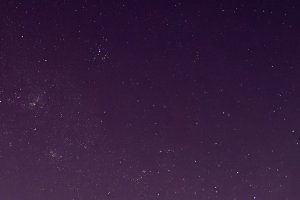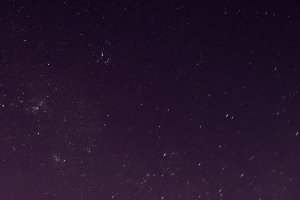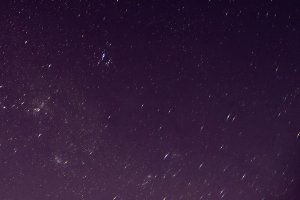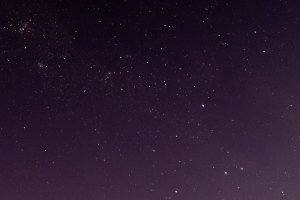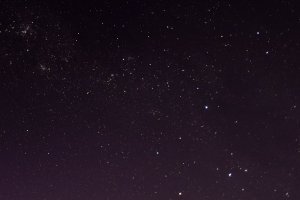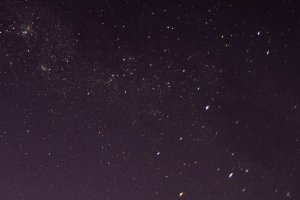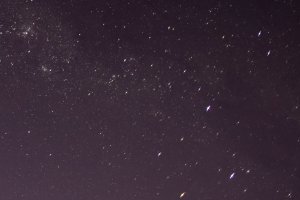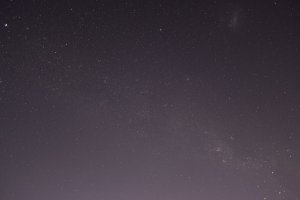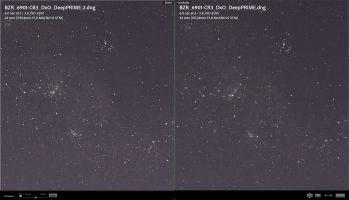I got a message from the retailer that the new RF 24mm are stocked and ready to be shipped. I ordered it and and it is being shipped today. I expect it to arrive Monday or Tuesday just before my trip to Ibiza where it would be used. I am curious if others have there samples in as well and have a general discussion about it.
You are using an out of date browser. It may not display this or other websites correctly.
You should upgrade or use an alternative browser.
You should upgrade or use an alternative browser.
Canon RF 24mm F1.8 Macro discussion
- Thread starter Memdroid
- Start date
I'm definitely interested in this lens. I like that it seems to be based more on the 35 lens body rather than the 50, with IS, and separate focus and control rings. I also like that it is lighter than the 35 and seems to have an actual hood rather than the joke of a hood the 35 has.
Upvote
0
I received my RF 24/1.8 yesterday. I wanted to see how it would perform in terms of coma with astro photos. The forecast for the next few days is for cloud and rain, but I had a window of a few minutes when I could see the Milky Way in between the clouds. These are, of course, not completely processed, but will give an indication of the lens' performance. All files converted in DXO PureRaw2, which as yet does not have a profile for the RF 24/1.8. All 6 seconds at ISO 3200, except the last at ISO 6400.
1: Full frame taken at f/2
2: Tight crop from top left corner at f/2. There is quite a bit of cloud here, but at least there are obvious stars here.
3: Crop at f/2.5
4: Crop at f/2.8
5: Crop at f/2.8 with some star "wings" removed by cloning - edit: looking at the image here shows, I haven't done a great job
6: Crop at f/4 and ISO 6400.
In short, lens is sharp in the centre from wide open. Coma in the corners is pretty bad at f/1.8 to f/2.5, but acceptable at f/2.8, especially if the relatively few stars with coma wings are cleaned up. f/4 is better, but noyt worth the jump in ISO needed.
Will post more images when we get clear skies and when DXO produces a profile for this lens.
1: Full frame taken at f/2
2: Tight crop from top left corner at f/2. There is quite a bit of cloud here, but at least there are obvious stars here.
3: Crop at f/2.5
4: Crop at f/2.8
5: Crop at f/2.8 with some star "wings" removed by cloning - edit: looking at the image here shows, I haven't done a great job
6: Crop at f/4 and ISO 6400.
In short, lens is sharp in the centre from wide open. Coma in the corners is pretty bad at f/1.8 to f/2.5, but acceptable at f/2.8, especially if the relatively few stars with coma wings are cleaned up. f/4 is better, but noyt worth the jump in ISO needed.
Will post more images when we get clear skies and when DXO produces a profile for this lens.
Attachments
-
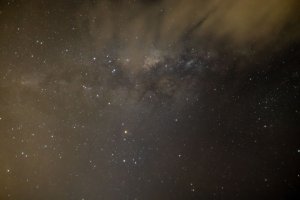 BZR_6837-CR3_DxO_DeepPRIME.jpg104.9 KB · Views: 14
BZR_6837-CR3_DxO_DeepPRIME.jpg104.9 KB · Views: 14 -
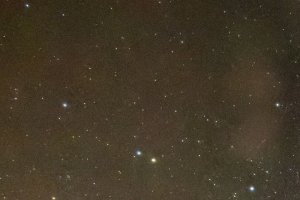 BZR_6842-CR3_DxO_DeepPRIME.jpg190.7 KB · Views: 13
BZR_6842-CR3_DxO_DeepPRIME.jpg190.7 KB · Views: 13 -
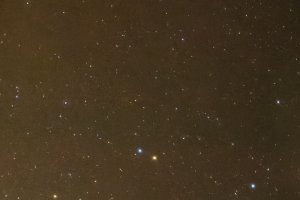 BZR_6839-CR3_DxO_DeepPRIME-Edit.jpg127.3 KB · Views: 13
BZR_6839-CR3_DxO_DeepPRIME-Edit.jpg127.3 KB · Views: 13 -
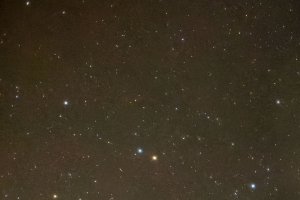 BZR_6839-CR3_DxO_DeepPRIME.jpg150.8 KB · Views: 13
BZR_6839-CR3_DxO_DeepPRIME.jpg150.8 KB · Views: 13 -
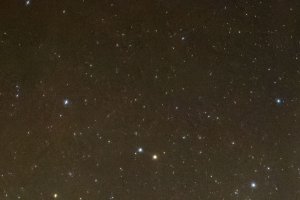 BZR_6838-CR3_DxO_DeepPRIME.jpg149.7 KB · Views: 12
BZR_6838-CR3_DxO_DeepPRIME.jpg149.7 KB · Views: 12 -
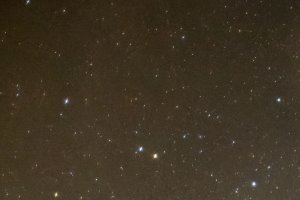 BZR_6837-CR3_DxO_DeepPRIME-2.jpg146.3 KB · Views: 13
BZR_6837-CR3_DxO_DeepPRIME-2.jpg146.3 KB · Views: 13
Last edited:
Upvote
0
Clear skies this morning, but too late to avoid the initial light from the rising sun. But a better assessment of the RF 24/1.8 and a comparison with my EF 35/2 IS. I knew that the EF 35 f/2 IS had bad coma, but I thought it would be a useful comparison. All shot with EOS R, ISO 3200 except f/2 and f2.5 at ISO 1600. Processed in DXO Pure Raw2. Only image adjustment is of the blacks to make comparable images.
1: Full frame with RF 24mm. Crops taken from bottom right as stars more equivalent in both lenses. Note that the RF 24mm includes the Southern Cross in the crop.
2: RF 24 f/2
3: RF 24 f/2.5
4: RF 24 f/4
5: EF 35 f/2
6: EF 35 f/2.8
7: EF 35 f/4
Conclusion as before: RF 24mm: Corner coma bad at f/2 (and f/1.8), a little better at f/2.5, very usable at f/2.8, a little better at f/4.
EF 35mm: Coma worse than RF 24 at f/2, better at f/2.8, but needs to stopped down to f/4 to be acceptable.
Overall conclusion: RF 24/1.8 superior to EF 35/2 IS in terms of corner coma. It would appear that the RF 24mm is suitable for astrophotography at f/2.8, provided a few remaining stars in the extreme corner are either cropped out or tidied up.
1: Full frame with RF 24mm. Crops taken from bottom right as stars more equivalent in both lenses. Note that the RF 24mm includes the Southern Cross in the crop.
2: RF 24 f/2
3: RF 24 f/2.5
4: RF 24 f/4
5: EF 35 f/2
6: EF 35 f/2.8
7: EF 35 f/4
Conclusion as before: RF 24mm: Corner coma bad at f/2 (and f/1.8), a little better at f/2.5, very usable at f/2.8, a little better at f/4.
EF 35mm: Coma worse than RF 24 at f/2, better at f/2.8, but needs to stopped down to f/4 to be acceptable.
Overall conclusion: RF 24/1.8 superior to EF 35/2 IS in terms of corner coma. It would appear that the RF 24mm is suitable for astrophotography at f/2.8, provided a few remaining stars in the extreme corner are either cropped out or tidied up.
Attachments
Upvote
0
L
Loswr
Guest
Based on Bryan/TDP testing, a CP filter doesn't affect vignetting. Bryan uses a B+W F-Pro (standard mount) CP filter for those tests, which has a 7mm mount thickness. So, you should be fine with a regular filter mount from any brand.Quick question: does the 24/1.8 take regular filters, or are slim filters required? Thanks

Canon RF 24mm F1.8 Macro IS STM Lens Vignetting
Review vignetting (peripheral shading) test results with f-stop contours for the Canon RF 24mm F1.8 Macro IS STM Lens. Compare the results from this lens with other lenses.
Upvote
0
DXO Pure Raw 2 now has a profile for the RF 24/1.8. I think it makes a noticeable difference in sharpness. There is also a slight crop. Coma, as expected, is unchanged.
Here is a screenshot of a crop from the middle lower right of the previous images where there are many small stars. The DXO output with the profile is on the left. I think the improved sharpness is apparent, especially in terms of detail of faint stars, without an increase in noise. I look forward to stacking some photos taken without the Moon..
Here is a screenshot of a crop from the middle lower right of the previous images where there are many small stars. The DXO output with the profile is on the left. I think the improved sharpness is apparent, especially in terms of detail of faint stars, without an increase in noise. I look forward to stacking some photos taken without the Moon..
Attachments
Upvote
0
I engaged in some retail therapy yesterday, and took my new 24 mm for a spin. In short, I'm happy with my purchase.
Weight - This lens hardly weighs anything, and as a hiker/backcountry skier / traveler this is a big, big plus to me, and the main reason I bought this rather than a heavy Sigma lens.
Macro - Before purchasing the lens I wasn't too excited about the macro feature. Macros should be shot with 100 mm lenses, and wideangles produce bad bokeh and minimal blur, right? Well no - chuck all of that out the window. At short focusing distances, this lens produces thin dof and beautiful blurred backgrounds. Because the background covers such a wide angle, creating a nice background to a subject is way different than shooting with a telephoto lens. I had a lot of fun experimenting with the RF 24 mm's macro feature, and I liked the results way more than I thought I would. This is not just a gimmick - this adds another dimension to what would traditionally be viewed as a pure landscaping lens. I'm surprised because my old Tokina 10-17 zoomable fisheye (APSC) also has this feature but I never liked the results.
Landscapes - This lens does not disappoint. The center is quite sharp wide open and the corners are good. At f/2.8 the center is exceedingly sharp and the corners are very good. At normal landscaping fstops (5.6-11) the lens produces corner-to-corner sharpness. Flare is very well controlled. Rendering is excellent. I did not really put the IS through its paces so I can't really comment on its effectiveness.
Astro - @Frodo prepared me for this, and my results are consistent with Frodos. At f/1.8 the sagittal astigmatism (wings) is really, really bad - bad enough to be obvious on web-sized prints. It's not just the extreme corners that are bad - the area affected takes up most of the image area. Stopping down to f/2.2 doesn't do much to alleviate the problem, but at f/2.8 things suddenly get better. I'd say it is the minimum fstop for acceptable results. I tried f/3.5 as well, and this tightens up the stars even more around the periphery. Only a bit of sagittal astigmatism remains in the extreme corners, but you have to go look for it.
In short, for astro you need to stop down. Stopped down it is a very good to excellent astro lens. This is the only real downside to this lens, and one that I was prepared to take. I have a tracking setup so I can manage slow shutterspeeds. With its macro capability, this lens is versatile a lot of fun.
FWIW my previous astro lens was Tokina 14-20/2 (APSC) which is sharp wide open and has very little coma/astigmatism, but this lens has field curvature which causes the corners to blur. On top of this is some decentering, which means that each corner can be made sharp but only by focusing them individually, which is an impossible workflow. I love this lens but it is very frustrating at the same time. The moral of the story is that there is always a tradeoff somewhere.
Attached astro photo: 100% crop of top left-hand corner. Extreme corners are top left. Shot on an RP at 1600 iso, 60 seconds tracked, some jiggle due to wind.
Weight - This lens hardly weighs anything, and as a hiker/backcountry skier / traveler this is a big, big plus to me, and the main reason I bought this rather than a heavy Sigma lens.
Macro - Before purchasing the lens I wasn't too excited about the macro feature. Macros should be shot with 100 mm lenses, and wideangles produce bad bokeh and minimal blur, right? Well no - chuck all of that out the window. At short focusing distances, this lens produces thin dof and beautiful blurred backgrounds. Because the background covers such a wide angle, creating a nice background to a subject is way different than shooting with a telephoto lens. I had a lot of fun experimenting with the RF 24 mm's macro feature, and I liked the results way more than I thought I would. This is not just a gimmick - this adds another dimension to what would traditionally be viewed as a pure landscaping lens. I'm surprised because my old Tokina 10-17 zoomable fisheye (APSC) also has this feature but I never liked the results.
Landscapes - This lens does not disappoint. The center is quite sharp wide open and the corners are good. At f/2.8 the center is exceedingly sharp and the corners are very good. At normal landscaping fstops (5.6-11) the lens produces corner-to-corner sharpness. Flare is very well controlled. Rendering is excellent. I did not really put the IS through its paces so I can't really comment on its effectiveness.
Astro - @Frodo prepared me for this, and my results are consistent with Frodos. At f/1.8 the sagittal astigmatism (wings) is really, really bad - bad enough to be obvious on web-sized prints. It's not just the extreme corners that are bad - the area affected takes up most of the image area. Stopping down to f/2.2 doesn't do much to alleviate the problem, but at f/2.8 things suddenly get better. I'd say it is the minimum fstop for acceptable results. I tried f/3.5 as well, and this tightens up the stars even more around the periphery. Only a bit of sagittal astigmatism remains in the extreme corners, but you have to go look for it.
In short, for astro you need to stop down. Stopped down it is a very good to excellent astro lens. This is the only real downside to this lens, and one that I was prepared to take. I have a tracking setup so I can manage slow shutterspeeds. With its macro capability, this lens is versatile a lot of fun.
FWIW my previous astro lens was Tokina 14-20/2 (APSC) which is sharp wide open and has very little coma/astigmatism, but this lens has field curvature which causes the corners to blur. On top of this is some decentering, which means that each corner can be made sharp but only by focusing them individually, which is an impossible workflow. I love this lens but it is very frustrating at the same time. The moral of the story is that there is always a tradeoff somewhere.
Attached astro photo: 100% crop of top left-hand corner. Extreme corners are top left. Shot on an RP at 1600 iso, 60 seconds tracked, some jiggle due to wind.
Attachments
Last edited:
Upvote
0
Christopher Frost posted a review here: He's pretty happy apart from corner performance.
When I got my RF 24mm I tested it with resolution charts in my living room, as I do with all lenses I buy. The width of the target is 4.5m wide, but it means that the camera is quite close (3m) to the centre of the wall I photographed. I was quite shocked how soft the corners were. I then tested the lens outdoors and it performed much better. And as I noted earlier, the lens is okay for astro at f/2.8. I wonder how large the the targets are that are used by online reviewers. This might also indicate some field curvature at closer distances.
When I got my RF 24mm I tested it with resolution charts in my living room, as I do with all lenses I buy. The width of the target is 4.5m wide, but it means that the camera is quite close (3m) to the centre of the wall I photographed. I was quite shocked how soft the corners were. I then tested the lens outdoors and it performed much better. And as I noted earlier, the lens is okay for astro at f/2.8. I wonder how large the the targets are that are used by online reviewers. This might also indicate some field curvature at closer distances.
Upvote
0
FWIW, here is Ken Rockwell's take on the 24/1.8
 For those not wanting to wade through endless boilerplate:
For those not wanting to wade through endless boilerplate:
Pros: tack sharp, can shoot handheld in near darkness.
Cons: with macro mode you get so close that the lens casts a shadow in the subject.
Yes, with the macro mode you must get really close, but that's part of the fun of it. It's a different way of shooting macro. As for the lighting, I try for diffuse lighting (overcast conditions) or sidelit/backlit.

Canon RF 24mm f/1.8 MACRO IS STM Review & Sample Images by Ken Rockwell
Canon RF 24mm f/1.8 MACRO IS STM Review & Sample Images by Ken Rockwell
kenrockwell.com
Pros: tack sharp, can shoot handheld in near darkness.
Cons: with macro mode you get so close that the lens casts a shadow in the subject.
Yes, with the macro mode you must get really close, but that's part of the fun of it. It's a different way of shooting macro. As for the lighting, I try for diffuse lighting (overcast conditions) or sidelit/backlit.
Upvote
0
With the 15-30 I can attach a UV filter and then place the lens face down on a newspaper. It will manually focus on the text, but it will be very, very darkFWIW, here is Ken Rockwell's take on the 24/1.8
For those not wanting to wade through endless boilerplate:
Canon RF 24mm f/1.8 MACRO IS STM Review & Sample Images by Ken Rockwell
Canon RF 24mm f/1.8 MACRO IS STM Review & Sample Images by Ken Rockwellkenrockwell.com
Pros: tack sharp, can shoot handheld in near darkness.
Cons: with macro mode you get so close that the lens casts a shadow in the subject.
Yes, with the macro mode you must get really close, but that's part of the fun of it. It's a different way of shooting macro. As for the lighting, I try for diffuse lighting (overcast conditions) or sidelit/backlit.
Upvote
0
Similar threads
- Replies
- 23
- Views
- 7K
- Replies
- 81
- Views
- 12K
- Replies
- 30
- Views
- 1K
- Replies
- 7
- Views
- 3K

